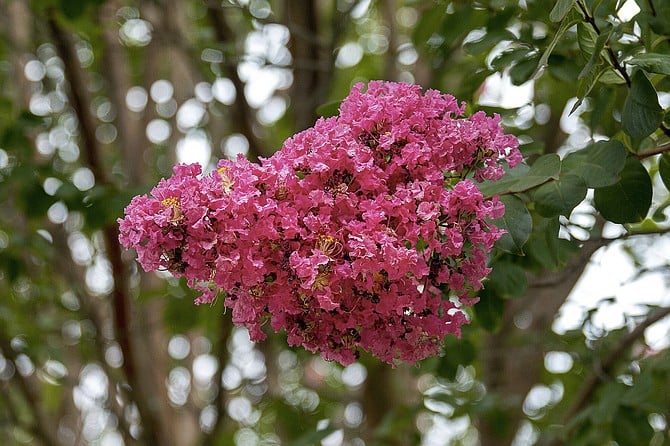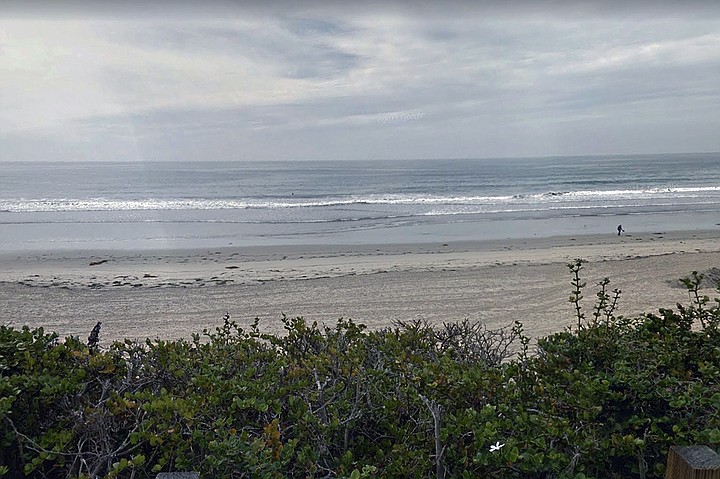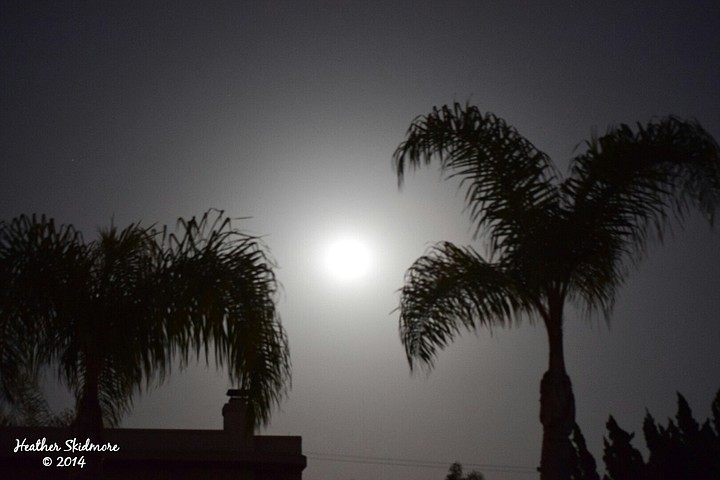 Facebook
Facebook
 X
X
 Instagram
Instagram
 TikTok
TikTok
 Youtube
Youtube

Call them crape myrtles or crepe myrtles, both names correctly describe the deciduous small trees from the Lagerstroemia genus in the loosestrife family (Lythraceae). Crape Myrtles are in bloom around San Diego this month through the end of summer. With smallish, vase-shaped tree blossoms in colors ranging from white or pale pink to lavender, red, and blue. “Lilac of the South” is one of the nicknames given to this native tree of China because of its popularity in the warmer parts of the U.S.

Ocean Water Temperatures are rising into the mid- or high 60s this month, perhaps to reach the low 70s in July or August. The usual early summer cool weather along San Diego’s coastline, disappointing to many tourists, is mostly caused by the sluggish warming of the ocean water. The payoff will come later: as the ocean gives up heat absorbed during the sunny summer months, we’ll enjoy warm days and evenings well into autumn.

June 3 will be the last full moon of Spring and the first of summer. Some native tribes called it the the “Strawberry Moon” because ripe strawberries were ready to be gathered at this time. The Anishinaabe people called it the “Blooming Moon” because it is indicative of the flowering season. The Tlingit used the term “Birth Moon,” referring to the time when certain animals are born in their region. “Egg Laying Moon” and “Hatching Moon” are Cree terms for this period.


Call them crape myrtles or crepe myrtles, both names correctly describe the deciduous small trees from the Lagerstroemia genus in the loosestrife family (Lythraceae). Crape Myrtles are in bloom around San Diego this month through the end of summer. With smallish, vase-shaped tree blossoms in colors ranging from white or pale pink to lavender, red, and blue. “Lilac of the South” is one of the nicknames given to this native tree of China because of its popularity in the warmer parts of the U.S.

Ocean Water Temperatures are rising into the mid- or high 60s this month, perhaps to reach the low 70s in July or August. The usual early summer cool weather along San Diego’s coastline, disappointing to many tourists, is mostly caused by the sluggish warming of the ocean water. The payoff will come later: as the ocean gives up heat absorbed during the sunny summer months, we’ll enjoy warm days and evenings well into autumn.

June 3 will be the last full moon of Spring and the first of summer. Some native tribes called it the the “Strawberry Moon” because ripe strawberries were ready to be gathered at this time. The Anishinaabe people called it the “Blooming Moon” because it is indicative of the flowering season. The Tlingit used the term “Birth Moon,” referring to the time when certain animals are born in their region. “Egg Laying Moon” and “Hatching Moon” are Cree terms for this period.
Comments